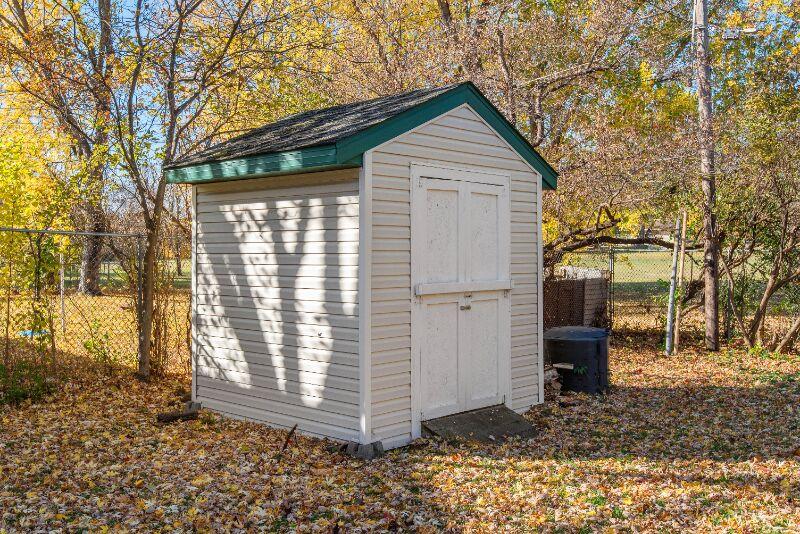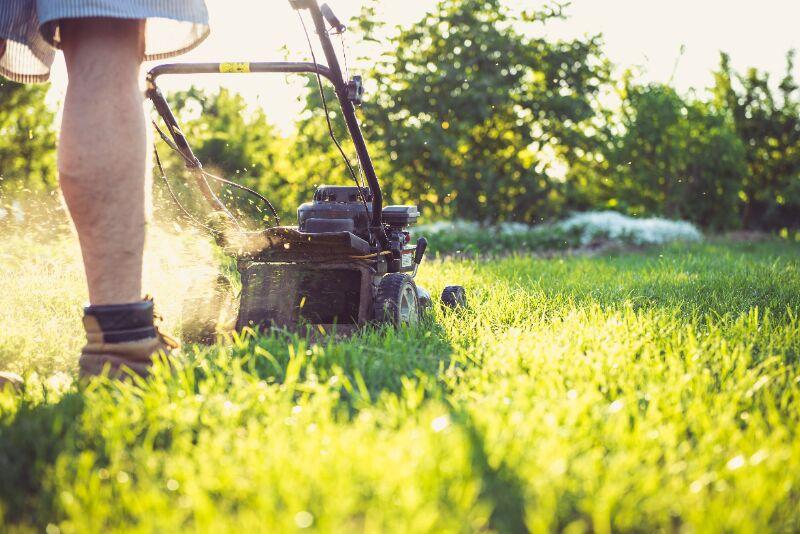Preparing Your Lawn Equipment for Winter Storage
Reading time: 7 minutesAs fall fades into winter, your lawn needs a different type of care. It’s time to store your summer lawn equipment for the season. While this may seem like a simple enough task on the surface, how you prepare your tools and where you store them significantly impacts their condition when it’s time to pull them out in the spring of next year.
Here’s a rundown of how you can prepare your lawn equipment for safe winter storage and how Green Drop is your go-to source for quality lawn care for every season.

The Benefits of Proper Equipment and Tool Storage
There are many advantages to making the effort to properly store your lawn equipment and other landscaping tools, including:
- It keeps expensive or hard-to-get tools in good shape
- It makes it easier to get tools and put them away
- You waste less time looking for the equipment you need
- You can fit more tools in the space you have
- It saves money on damaged tools that need replacement or repairs
- It keeps equipment safe from pests like wood-boring insects and mice
- Your tools will last longer and perform better
Types of Lawn Equipment You Need to Store During the Winter
Depending on your landscaping and its location, you may have the following:
- Lawnmowers. This includes push mowers, riding lawnmowers, and manual lawnmowers.
- Weed eaters. These can be hard to store due to their long configuration and sharp, partially exposed blades.
- Mulchers. Power mulchers are large and awkwardly shaped, which can take up a lot of space for just one piece of equipment.
- Leaf and snow blowers. If you have a leaf or snow blower that you can use to get rid of snow drifts, you should keep it near the front of your storage area, where it can be quickly accessed when you need it.
- Hoses and sprinklers. If you use sprinklers that detach from the ground, you can put any removable components in storage during the winter season. This prevents damage to your equipment.
- Sprayers and pressure washers. These must be clean and dry before storage to avoid leftover moisture from freezing inside and potentially damaging crucial components.
- Shovels and rakes. Shovels, ranks, and other handheld equipment are often the easiest to store. Again, these should be easy to get to from the front of the storage shed without going into the back or climbing over other materials to get to the equipment you need.
- Hatchets, axes, and log splitters. Sharp tools must be stored well out of reach of children, and away so no one accidentally bumps into a blade. Put individual covers on each blade as an additional precautionary measure.
- Cords and electrical equipment. If you have outdoor electrical equipment, heavy-duty extension cords, or any other outdoor electrical materials, they should be kept clean and dry when not in use during the winter season.
Cleaning and Maintenance of Your Equipment Before Storing
Prepare your tools before putting them away for the winter. Here are some things you should do:
Drain Fuel from Gas-Powered Equipment
First and foremost, drain any leftover fuel from your gas-powered equipment. One of the worst things you can do is leave gas in a tank over the winter because water condensation gets into the tank and mixes with the gas as the temperatures drop. You could cause serious clogs, corrosion, or even complete equipment failure in just one season.
The best way to store your lawnmower is after you’ve run it out of fuel. Do this when you cut your grass for the last time and mow until the tank is empty. If you must fill up to finish your yard, use as little gas as possible to prevent waste.

Clean Off Rust and Apply Anti-Rust Solutions
Cold and dry winter air is hard on metal tools, fixtures, and components. They’re more susceptible to corrosion during this time, but some simple prep before storing them can help keep rust at bay.
Gently wipe tools with a cloth to remove dirt, dust, and debris. If you need to remove stuck-on grime, use a damp cloth or a gentle scrub brush with warm water and a little dish soap. Let your tools dry entirely before applying oil or anti-rust solutions to create a barrier between the clean metal and environmental elements.
If you don’t already, make a habit of cleaning and oiling metal tools after each use. This keeps them in good condition longer, so you can get the most out of your investment. You can also store equipment in a chest or cabinet with silica gel packs to absorb the excess moisture that leads to rust.
Remove Batteries from Power Tools
Power tools with batteries should be stored without them, especially if they use lithium or lithium-ion batteries. Battery cells are especially sensitive to temperature fluctuations, so neither extreme is good for longevity. In extreme cold, battery packs may freeze completely and become unusable.
If possible, create a small area inside your home to store temperature-sensitive items like batteries away from the heat or cold. This also protects them from getting wet or being exposed to high humidity, which can cause corrosion.
Protecting Your Tools While They’re In Storage
Good security practices are twofold: they prevent theft and reduce the chances of unauthorized access to potentially dangerous equipment.
Use high-quality cabinets and secure tool chests to keep equipment in while not in use. Unlike everyday toolboxes that often lack durability and security, high-quality storage solutions resist wear and tear and help keep your tools in optimal condition. You should also store these containers in secure locations, like a locked garage or shed on your property.
Tips for Organizing Your Storage Space
How you organize your storage space makes a big difference in what you can store and how easy it is to maneuver around the area once everything is put up. These simple tips can help:
- Take advantage of vertical and overhead space. Most storage areas have limited horizontal space; if you try to store everything at eye level or below, things can get cluttered quickly.
Hang tools and lightweight equipment overhead or on the upper portion of the wall instead of on the ground. This is especially great for infrequently used equipment you only have to get down occasionally.
- Store tools where they can be easily seen. The last thing you want to do is rummage through many tools to find what you’re looking for. This is frustrating and time-consuming, creates clutter, and requires more effort to clean up.
- Label concealed storage areas. If you have drawers or other storage areas you can’t see inside, label them clearly so you don't have to go into the drawer and search for what you want.
- Group similar objects together. If possible, it's a good idea to group like items together so you can easily find them and anything else you might need.
For example, store things like grass seed and lawn fertilizer on a shelf near your lawn-mowing and weed-eating equipment. That way, all your lawn care items are accessible without moving about your entire storage area to find what you need.
- Store your items strategically within the space. Your outdoor storage areas should change with the seasons. Things you need during the winter, like salt and snow shovels, should be kept at the front of your storage area during the winter. These tools could go to the back in the spring, and your lawn equipment can be brought to the front again for the summer.

Green Drop Is Your Lawn Care Partner
Winters can be harsh—on your lawn equipment and your yard!
When it comes to the latter, we’re the experts. If you’ve got snow piling in your yard and don’t have the necessary equipment to clear it, we can help.
Stay warm and snuggly while we take snow removal off your hands. Call us today at 1-877-647-3366 for snow removal services. You get a flat rate and snow fully cleared to the pavement (with IceMelt add-on).

